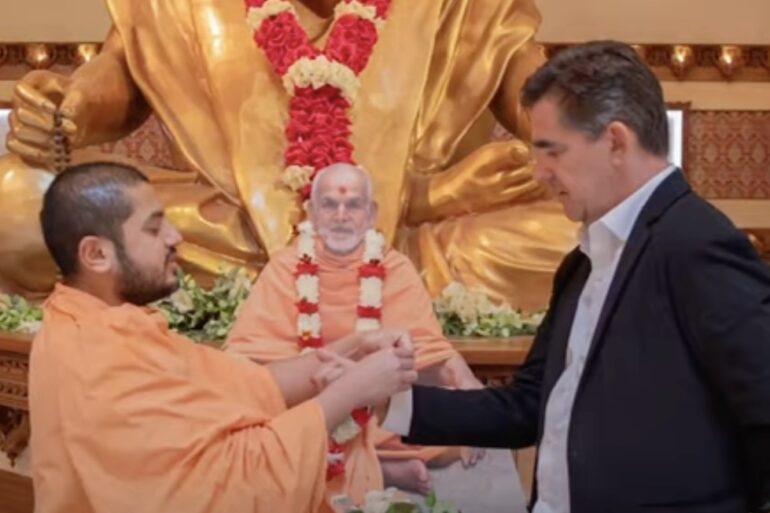Community, Responsibility, Unity: Josh Prutch’s Experiences at the Akshardham Temple
By Sebastian Johnson
One of the four core beliefs of Hinduism is “dharma,” a word that translates roughly to duty or responsibility. A large part of dharma is one’s duty to their own community – and cooperation between community members. This core belief of Hinduism colored NISA Executive Vice President of Expansion Josh Prutch’s recent trip to the magnificent BAPS Shri Swaninarayan Akshardham Temple in Robbinsville, NJ.
“During the final phases of construction I was invited to Akshardham Temple,” Prutch explains. “A number of years ago, I was fortunate enough to meet a man with the title of Swami. He is a Hindu monk that lives here in the United States, and one of his many projects is building Hindu temples around the country.”
The temple is named for the Sanskrit word akshardham, which means “abode of the divine,” and is the third such temple created by the BAPS (Bochasanwasi Shri Akshar Purushottam Swaminarayan) organization. The larger religious compound, the final part of which recently opened in just the past few weeks, is the largest Hindu temple and religious studies complex outside of Asia, and the second largest on the planet right behind Cambodia’s Angkor Wat.
The $96 million, multinational project was constructed in two phases by more than 12,500 volunteers. Despite being conceived by Pramukh Swami Maharaj in 1997, the first phase didn’t break ground until 2010 when the temple itself began construction – finishing and opening for religious service in 2014. From 2014 to 2023 they built out the surrounding complex.
The temple itself was constructed in the traditional Nagaradi style, and as such presents an incredibly accurate look at what Hindu temples look like in Asia. All the walls are even covered in real marble, and Indian pink stone, all hand carved in Rajasthan, India. The temple caters specifically to the Swaminarayan sect of Hinduism, and as such the carvings on the outside tell the story of Seti and Bhakti. These two concepts, respectively translating roughly to “selfless service” and “devotion,” form the core of the Swaminarayan sect teachings.
“You have this incredible multinational project where they used marble from four different quarries, managed to construct all the parts of the temple in India and have them shipped to America, and then have it all constructed by volunteers here – all for a common cause,” Prutch says. “Just getting to be there was one of my more humbling experiences.”
The magnificent feat that is the Akshardham Temple and larger campus wouldn’t have been possible without the literal thousands of people that volunteered to help create this asset to their community. In this beautiful example of the power of collaboration Prutch sees parallels to the NISA community and the way they’ve taken advantage of the power of collaboration.
“Checking your ego, checking your personal interest and coming together for a common goal. It needs to be acknowledged!” Prutch explains. “Every NISA club has a unique story. Every player on the pitch has a background that needs to be highlighted. All of these people in the NISA community persevere to open up more and more opportunities for the next generation of soccer players and soccer clubs.”
What Prutch witnessed at Akshardham Temple was a monument to the power of unity, selflessness and responsibility. These are powerful and universal lessons that transcend apply to all of us – from thousands of volunteers building a massive monument to their religion, to your local NISA team coming together to win the match.





